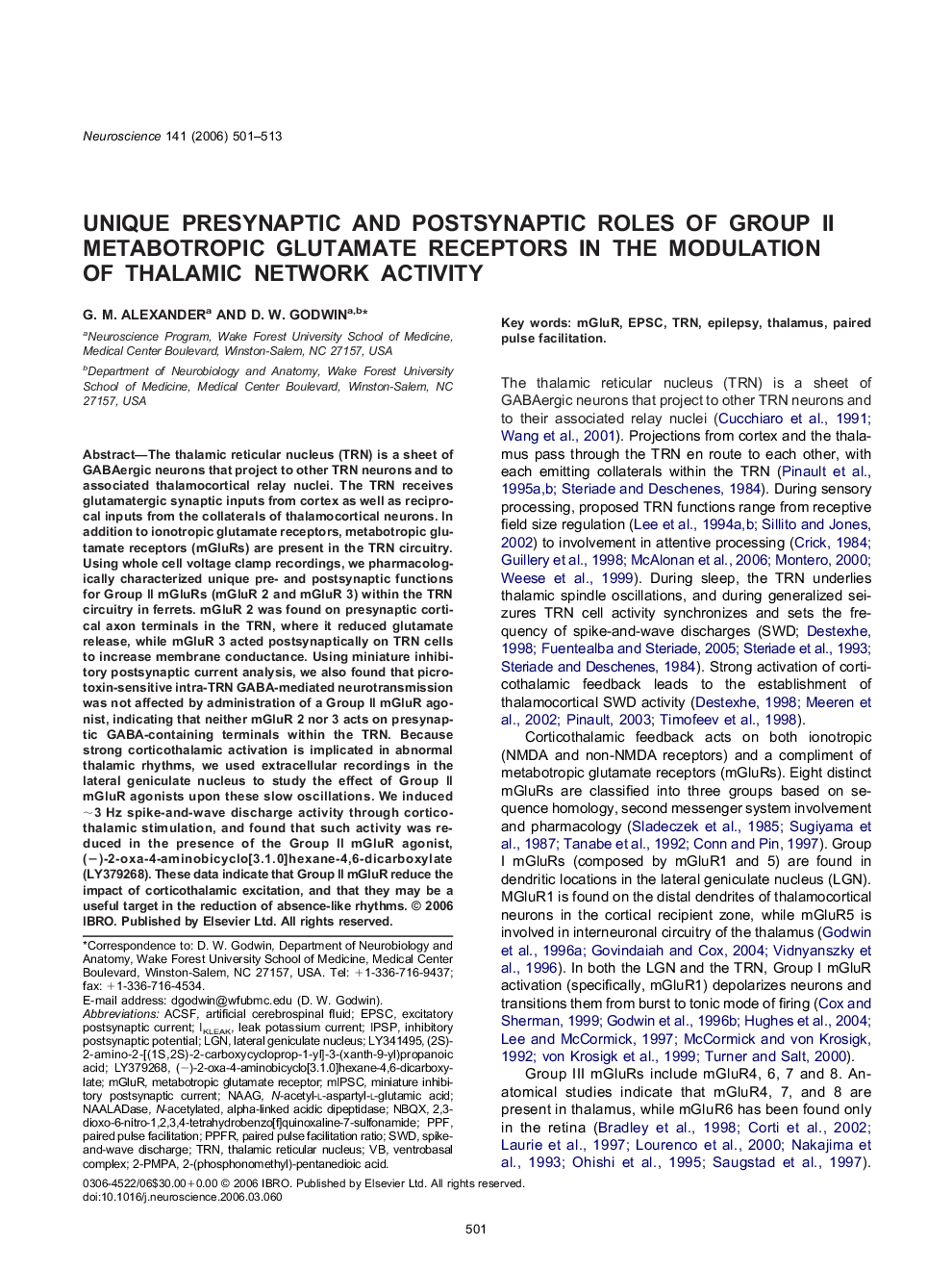| Article ID | Journal | Published Year | Pages | File Type |
|---|---|---|---|---|
| 4342289 | Neuroscience | 2006 | 13 Pages |
The thalamic reticular nucleus (TRN) is a sheet of GABAergic neurons that project to other TRN neurons and to associated thalamocortical relay nuclei. The TRN receives glutamatergic synaptic inputs from cortex as well as reciprocal inputs from the collaterals of thalamocortical neurons. In addition to ionotropic glutamate receptors, metabotropic glutamate receptors (mGluRs) are present in the TRN circuitry. Using whole cell voltage clamp recordings, we pharmacologically characterized unique pre- and postsynaptic functions for Group II mGluRs (mGluR 2 and mGluR 3) within the TRN circuitry in ferrets. mGluR 2 was found on presynaptic cortical axon terminals in the TRN, where it reduced glutamate release, while mGluR 3 acted postsynaptically on TRN cells to increase membrane conductance. Using miniature inhibitory postsynaptic current analysis, we also found that picrotoxin-sensitive intra-TRN GABA-mediated neurotransmission was not affected by administration of a Group II mGluR agonist, indicating that neither mGluR 2 nor 3 acts on presynaptic GABA-containing terminals within the TRN. Because strong corticothalamic activation is implicated in abnormal thalamic rhythms, we used extracellular recordings in the lateral geniculate nucleus to study the effect of Group II mGluR agonists upon these slow oscillations. We induced ∼3 Hz spike-and-wave discharge activity through corticothalamic stimulation, and found that such activity was reduced in the presence of the Group II mGluR agonist, (−)-2-oxa-4-aminobicyclo[3.1.0]hexane-4,6-dicarboxylate (LY379268). These data indicate that Group II mGluR reduce the impact of corticothalamic excitation, and that they may be a useful target in the reduction of absence-like rhythms.
